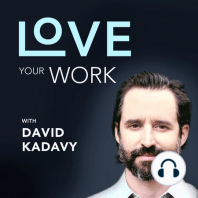108 min listen
224. Sloppy Operating Procedure
FromLove Your Work
ratings:
Length:
15 minutes
Released:
Apr 2, 2020
Format:
Podcast episode
Description
Many businesses have “SOP’s” It sounds very official as an acronym, and what it stands for sounds even more official: Standard Operating Procedure. It’s a document which outlines a process within a business. What’s the purpose of the process? What are the steps to follow? Who will do different parts of the processes, and which parts can’t begin until another part is finished? I was telling a friend about the process documents I have for running my business, and he said, “oh, you mean SOPs?” I could feel a visceral reaction to that term. It made the muscles in my back and neck tense up. “Yeah, SOPs,” I said. “But they aren’t Standard Operating Procedures. They’re Sloppy Operating Procedures.” Processes make businesses possible Every business has processes. The employees of that business follow these processes to build a product, or perform a service. Processes make businesses possible. Processes help the business create a consistent product, at scale. Through repetition, processes allow businesses to create more of their product, at higher quality, with lower expenses -- to increase profits. Each time a process is followed is another opportunity to reduce error, or to simplify the process. It took me a really long time to realize that processes are important for creatives, too. I thought that process was the enemy of creativity. I’ve come to learn that process is creativity’s best friend. For creativity, forget the Standard Operating Procedure -- try the Sloppy Operating Procedure I wasn’t completely wrong in thinking that process was the enemy of creativity. My problem was that I was thinking about process in the wrong way. I was thinking of process as an SOP -- Standard Operating Procedure, when I needed to be thinking of a process as the other SOP -- Sloppy Operating Procedure. Whenever I sat down to try to writing a Standard Operating Procedure, my brain would shut down. It wasn’t until I gave myself permission to suck -- permission to create a Sloppy Operating Procedure -- that I really made progress. The Sloppy Operating Procedure is not a neatly-edited list of steps and standards and dependencies that help you deliver a product. No, the Sloppy Operating Procedure is a living document. It’s disorganized. It has free-written paragraphs that might be incomplete or end mid-sentence. It’s full of grammar and spelling mistakes. The Sloppy Operating Procedure is, well, sloppy. Sloppy Operating Procedures kill procrastination There are two important mechanisms that make the Sloppy Operating Procedure powerful. One is that the Sloppy Operating Procedure kills procrastination. It does this in a couple of ways. One way the Sloppy Operating Procedure kills procrastination is that it gets you started on creating a process document. If you’re expecting to sit down and crank out a polished Standard Operating Procedure document, you’re going to put it off. The second way that the Sloppy Operating Procedure kills procrastination is that it makes it easier to do things that are boring or repetitive. This point requires some more explanation. SOPs kill boredom and drudgery I may dread collecting data for my monthly income reports, but the reason for the dread can be found in a document called “How to Be a Hacker.” A document dating back to 1996, which outlines the values of the “hacker” -- a word which has gained a lot of baggage over the years, but which to me still means someone who likes to know how something works, who will tinker around to find new ways of doing things. I shared this hacker credo in my first book, Design for Hackers, and rule number three of this credo explains the second way that the Sloppy Operating Procedure kills procrastination. That rule is as follows: Boredom and drudgery are evil. Boredom and drudgery are evil. Anything that you’ve had to figure out one time, you shouldn’t have to figure out a second time. And this, I’ve found, is at the root of why I procrastinate on some tasks in my business. So the reason
Released:
Apr 2, 2020
Format:
Podcast episode
Titles in the series (100)
6. Don't let your "baby" get slaughtered – Adrian Holovaty of Soundslice, Django, and Everyblock: Adrian Holovaty (@adrianholovaty) has learned the hard way that he wants to retain control of his business. After selling Everyblock, Adrian watched in horror as it was later shut down without warning. Adrian's new business is SoundSlice... by Love Your Work
